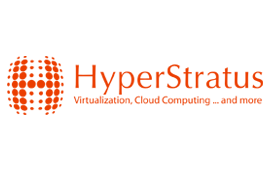The Silicon Valley Education Foundation (SVEF) is a key non-profit in the San Francisco Bay Area. With a charter to support Pre-Kindergarden through 12th grade education, SVEF supports students, teachers, and administrators through grants, programs, and technology offerings.
 One technology offering, Lessonopoly, is a Web 2.0 application designed to let teachers share high-quality and relevant resources and knowledge through sharing content and peer experience. Lessonopoly enables teachers to create, store, modify, and share lesson plans, which are the tools teachers use to structure course modules. Lesson plans have traditionally been paper-based documents, offering poor support for teaching resources of today: digital photos, videos, hyperlinks, and the like. To move lesson plans into the 21st century, SVEF introduced Lessonopoly, web-based content management system.
One technology offering, Lessonopoly, is a Web 2.0 application designed to let teachers share high-quality and relevant resources and knowledge through sharing content and peer experience. Lessonopoly enables teachers to create, store, modify, and share lesson plans, which are the tools teachers use to structure course modules. Lesson plans have traditionally been paper-based documents, offering poor support for teaching resources of today: digital photos, videos, hyperlinks, and the like. To move lesson plans into the 21st century, SVEF introduced Lessonopoly, web-based content management system.Lessonopoly achieved rapid uptake and quickly became a valuable resources for the 13,000 teachers located in the SVEF service area. However, SVEF faced a crucial problem in its Lessonopoly deployment: vulnerability to hardware failure. The system was hosted on a single server in a local colocation center; hardware failure would expose the entire user population to lack of system availability until repairs could be made.
“We were asked by SVEF to propose a solution that would increase system robustness without increasing costs,” said Bernard Golden, CEO of HyperStratus, the consulting firm SVEF engaged to help it address its downtime exposure. “We looked at moving to virtualization in the colocation facility which would have addressed the hardware vulnerability, but would also have increased costs significantly. Instead, we turned to Amazon Web Services to host the application.”
Lessonopoly is based on the open source content management system called Drupal. Lessonopoly is implemented via a multi-tier architecture, supporting application decomposition across multiple servers to provide higher performance and scalability as needed. AWS’ ability to easily and quickly instantiate additional servers enables Lessonopoly to be dynamically scaled to address variable workloads, typical of an education environment.
As part of the design portion of the migration project, HyperStratus modeled several different application topologies and calculated TCO numbers, comparing AWS with the corresponding co-location topology. “We found that AWS was anywhere from 40% to 65% less expensive than the co-location alternative, not to mention the additional robustness offered by AWS in terms of redundant storage and multiple location availability, as well as the unlimited scalability AWS provides,” says Golden.
Today, Lessonopoly runs on AWS infrastructure, ensuring that this teaching resource is available 24X7 year round. “We’re really pleased that HyperStratus proposed moving our application to the cloud,” says Muhammed Chaudhry, SVEF CEO. “We’re not a technology organization, so knowing our application resides in Amazon’s best-of-breed facilities with operational redundancy built-in makes us confident we can support our mission: making a world-class education available to the students of Silicon Valley. HyperStratus and AWS moved us from last-in-class to first-in-class.”
Amazon Case Study: HyperStratus
Date: 28-08-2013